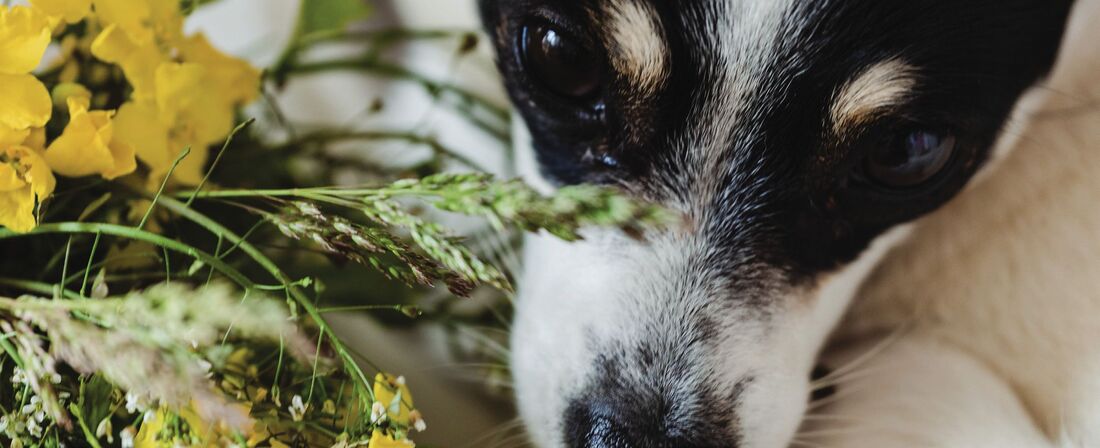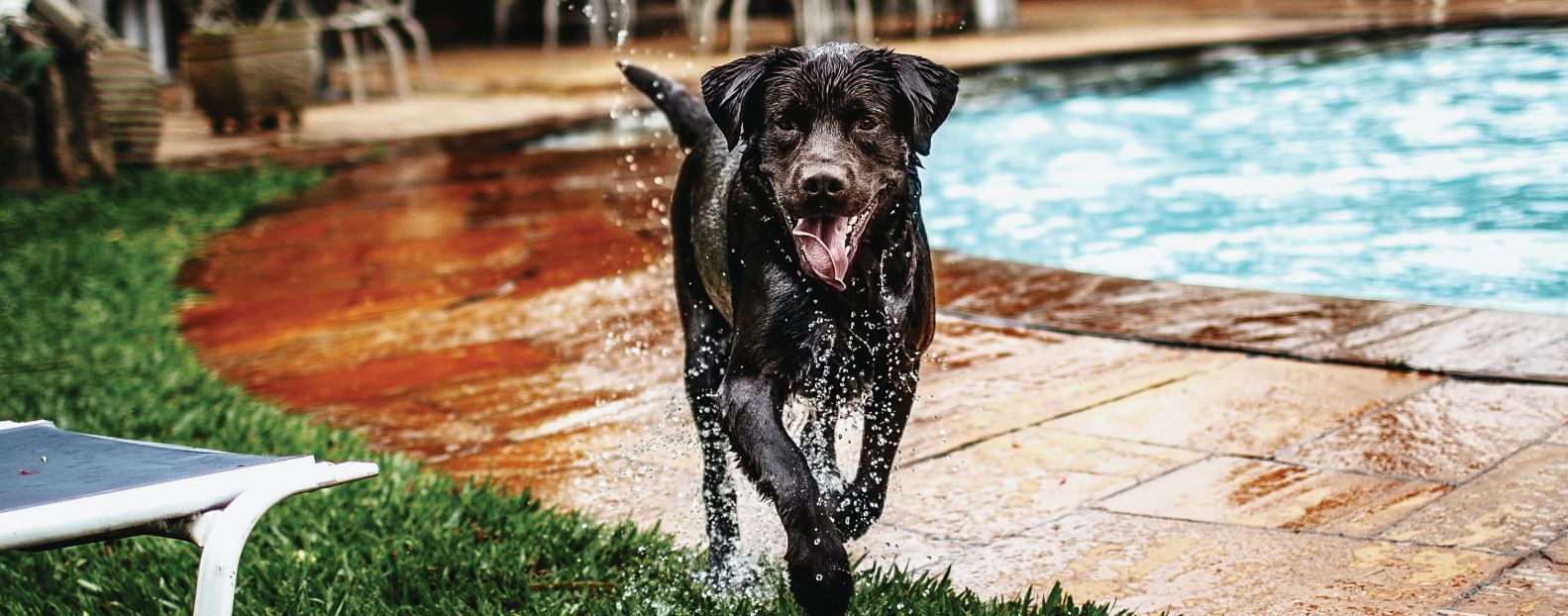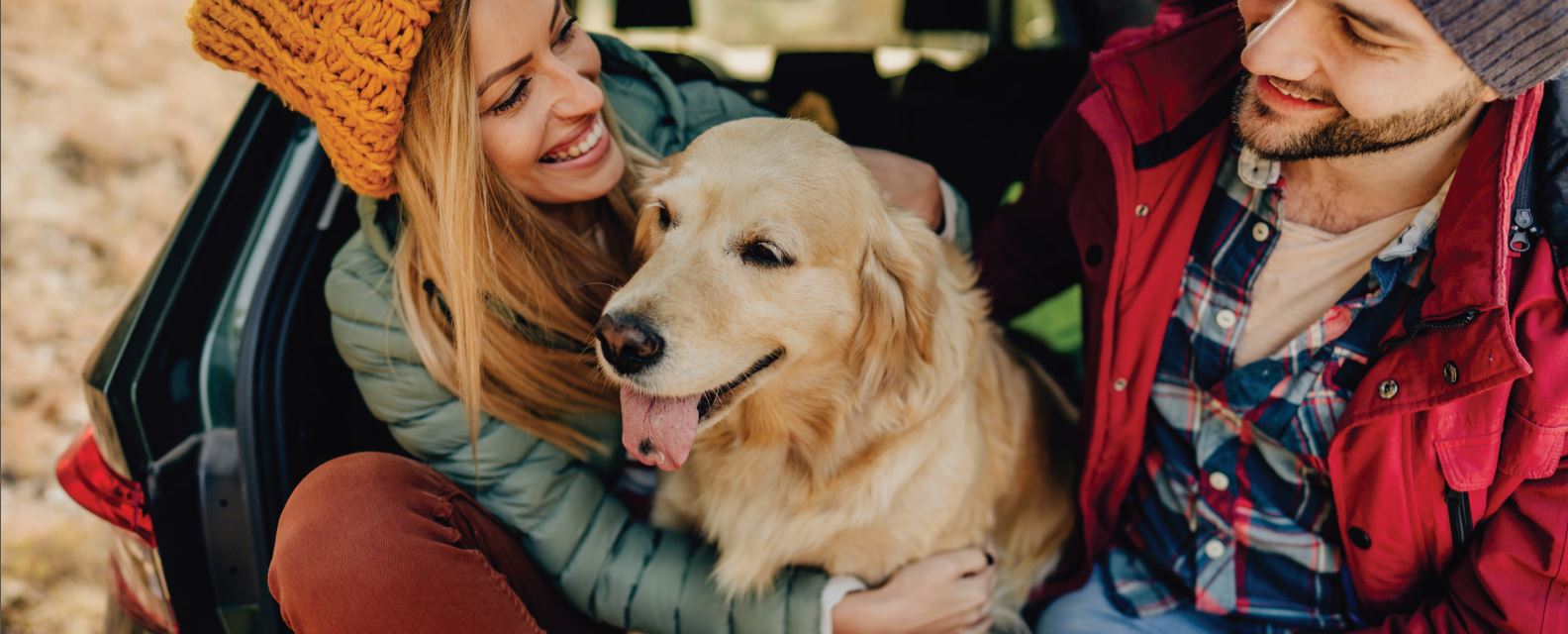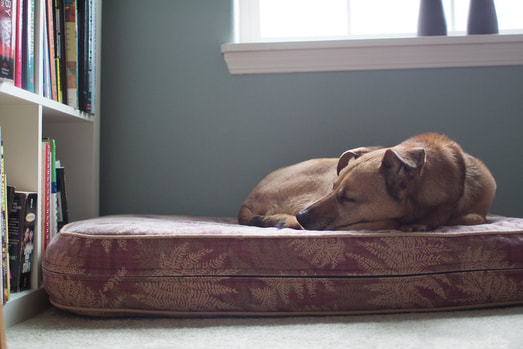Welcome to first 2021 newsletter!
Welcome to our first clinic newsletter for 2021! We hope that you and your families had a happy and healthy Christmas and New Year period. We are excited to be back in the clinic seeing all our furry friends. As we enjoy another Australian Summer, we wanted to remind our clients about some important pet safety topics to think about in this newsletter.
From your caring team at
Karrinyup Small Animal Hospital
From your caring team at
Karrinyup Small Animal Hospital
Are Your Houseplants Pet Friendly?

Our pets are naturally inquisitive and use their mouths to sense and feel. Dogs are especially good at having a chew – and cats are too! It will come as no surprise then, that this can be a serious problem if you’ve got poisonous plants at home.
The thing is, how can you tell if your houseplant is safe or poisonous for your cat or dog? This article helps you figure out what to look out for and how to choose indoor plants that look great and don’t pose a threat to your pet.
1. Houseplants that are poisonous to pets
There are a lot of indoor plants that are dangerous for your pets. Pink and yellow oleander might look nice in a pot, but every part of the plant is poisonous! Even the sap from your standout poinsettia can cause skin irritation. From lovely lilies to gorgeous geraniums, plenty of plants can make your cat or dog seriously ill. If you’ve got aloe vera, azaleas, cyclamen, philodendron or tulips in the house, give them to a pet-less friend. Check out this article which has a list of 10 common plants and flowers that are toxic to cats and dogs. It also include the symptoms your pet could experience if they have ingested the poisonous plant.
For a comprehensive list of toxic plants to pets, head to the American Society for the Prevention of Cruelty to Animals (ASPCA) website. Their list includes pictures that will help you identify if you have any of the culprits around the house.
2. Safe houseplants for cats and dogs
The good news is, there are heaps of plants that are safe (and easy) for you to grow indoors. Spider plants, ferns and colourful bromeliads and marigolds are all harmless to dogs and cats. Beautiful moon orchids are safe too. Check out the ASPCA website for a list of houseplants that are safe for your pet. Cats seem to be more into plants – catnip (Nepeta cataria) being the obvious one. It’s easy to grow indoors so makes for a perfect houseplant. You could even pick up some cat herbs, such as cat mint (Nepeta mussinii) and cat thyme ¬(Teucrium marum). Both cats and dogs like to eat grass as it’s good for their digestion, so keep cat grass (Dactylis glomerata) in a pot for them to chew on occasionally.
3. What to do if you think your pet has been poisoned
If your cat or dog has ingested something poisonous, they’re likely to be lethargic, stop eating, be sick and have diarrhoea. They might even have a seizure. Check their gums to see if they look abnormal (normal is a healthy pink). If your pet displays any of these symptoms, contact us immediately and be ready to take your companion in.
The thing is, how can you tell if your houseplant is safe or poisonous for your cat or dog? This article helps you figure out what to look out for and how to choose indoor plants that look great and don’t pose a threat to your pet.
1. Houseplants that are poisonous to pets
There are a lot of indoor plants that are dangerous for your pets. Pink and yellow oleander might look nice in a pot, but every part of the plant is poisonous! Even the sap from your standout poinsettia can cause skin irritation. From lovely lilies to gorgeous geraniums, plenty of plants can make your cat or dog seriously ill. If you’ve got aloe vera, azaleas, cyclamen, philodendron or tulips in the house, give them to a pet-less friend. Check out this article which has a list of 10 common plants and flowers that are toxic to cats and dogs. It also include the symptoms your pet could experience if they have ingested the poisonous plant.
For a comprehensive list of toxic plants to pets, head to the American Society for the Prevention of Cruelty to Animals (ASPCA) website. Their list includes pictures that will help you identify if you have any of the culprits around the house.
2. Safe houseplants for cats and dogs
The good news is, there are heaps of plants that are safe (and easy) for you to grow indoors. Spider plants, ferns and colourful bromeliads and marigolds are all harmless to dogs and cats. Beautiful moon orchids are safe too. Check out the ASPCA website for a list of houseplants that are safe for your pet. Cats seem to be more into plants – catnip (Nepeta cataria) being the obvious one. It’s easy to grow indoors so makes for a perfect houseplant. You could even pick up some cat herbs, such as cat mint (Nepeta mussinii) and cat thyme ¬(Teucrium marum). Both cats and dogs like to eat grass as it’s good for their digestion, so keep cat grass (Dactylis glomerata) in a pot for them to chew on occasionally.
3. What to do if you think your pet has been poisoned
If your cat or dog has ingested something poisonous, they’re likely to be lethargic, stop eating, be sick and have diarrhoea. They might even have a seizure. Check their gums to see if they look abnormal (normal is a healthy pink). If your pet displays any of these symptoms, contact us immediately and be ready to take your companion in.
Preparing your pet for a visit to the vet
Taking your pet to the vet can be stressful for both you and your furry family member. But don’t fret, there are a few things you can do to make the experience as smooth as possible.
Treats
Bring lots of your pet’s favourite treats to reward them and keep them happy.
Toys
Bring along one of your furry family member’s familiar items to help them relax and stay calm.
Carriers
Use a carrier for cats and small dogs (if necessary). Make sure there are a few treats in the carrier for them. You can even spray a towel or blanket in a calming pheromone such as Adaptil (for dogs) or Feliway (for cats) and either drape it over the carrier or put it inside – this will help to promote relaxation.
Food
Try not to feed your pet close to their appointments. This can prevent nausea while travelling and make the treats more appealing.
Bathroom
Give them a chance to relieve themselves before you head off for your appointment.
Go for a walk
Take your dog for a walk before your appointment to exhaust some of their energy.
Talk to them
Talking to your pet while in the waiting room can help to soothe them, especially for cat’s in their carriers.
Rewards
When you get home from your appointment, make sure you reward your furry family member with their favourite food, treat or activity.
Pet Pool Safety

Whether you are relaxing by the pool or lounging on the beach, you might want to bring along your furry family member to join in the fun! To help maximise your fun with your pet while keeping them safe, we’ve got you covered with these tips and tricks.
Not all pets can swim
While some breeds of dog can swim naturally, you may be surprised to learn that other breeds may not be able to swim and are more likely to sink than to float in the water. For breeds like bulldogs or pugs you should introduce them slowly to the water and monitor where they are the most comfortable. In some cases they may be comfortable just wading rather than swimming.
Know the water
If you’re at the beach, it is of vital importance to make yourself aware of any rip currents in the area – and stay well away from them! Too much time in a chemically treated pool could be bad for your pet, especially if they drink the water! So make sure to monitor them closely and limited their time in the pool.
Life Jackets
Life Jackets are the safest option if your pet will be in deep water or on a boat. You can get pet specific life jackets and make sure they are fitted properly and securely.
Shade
Sunburn, dehydration and heatstroke are major risks to our pets. Always know where your closest bit of shade is for you and your furry family member to retreat there when need be.
Clean Drinking Water
While your pet is running around and having fun in the water and the sun, as a pet parent it is your responsibility to make sure they have enough fresh clean water to drink. A source of clean water could be far away so make sure to pack plenty before you go as well as an appropriate dish for them to drink from – there are some great lightweight pet options available.
Bath Time
After some fun times by the water, you should give your pet a bath to remove any dirty material that could cause irritation.
We hope these tips and tricks help you and your pet enjoy a safe and happy time by the water! If anything unfortunate or unexpected happens, seek veterinary advice immediately from us.
Not all pets can swim
While some breeds of dog can swim naturally, you may be surprised to learn that other breeds may not be able to swim and are more likely to sink than to float in the water. For breeds like bulldogs or pugs you should introduce them slowly to the water and monitor where they are the most comfortable. In some cases they may be comfortable just wading rather than swimming.
Know the water
If you’re at the beach, it is of vital importance to make yourself aware of any rip currents in the area – and stay well away from them! Too much time in a chemically treated pool could be bad for your pet, especially if they drink the water! So make sure to monitor them closely and limited their time in the pool.
Life Jackets
Life Jackets are the safest option if your pet will be in deep water or on a boat. You can get pet specific life jackets and make sure they are fitted properly and securely.
Shade
Sunburn, dehydration and heatstroke are major risks to our pets. Always know where your closest bit of shade is for you and your furry family member to retreat there when need be.
Clean Drinking Water
While your pet is running around and having fun in the water and the sun, as a pet parent it is your responsibility to make sure they have enough fresh clean water to drink. A source of clean water could be far away so make sure to pack plenty before you go as well as an appropriate dish for them to drink from – there are some great lightweight pet options available.
Bath Time
After some fun times by the water, you should give your pet a bath to remove any dirty material that could cause irritation.
We hope these tips and tricks help you and your pet enjoy a safe and happy time by the water! If anything unfortunate or unexpected happens, seek veterinary advice immediately from us.
The 2021 Pet Parent Checklist

The new year is a great time for resolutions and new goals, it is also a great time to make sure your pet is set for the year ahead. We’ve created a handy check list to make sure your pet is set for 2021.
1. Does your pet have an up-to-date ID tag?
If your pet escapes on an impromptu adventure and is found by a stranger, having an up-to-date ID tag with your current information can ensure your pet is returned safely to you.
2. Is your pet microchipped?
Similarly, if your pet is found without an owner or ID tag and is handed in to your local veterinary clinic, shelter or council, a valid and functioning microchip is needed to confirm the identity of its owner and notify them. Not sure? Come in and let us check for you.
3. Is your pet registered with the council?
You may be fined if you pet is not registered with your local council. The benefits of registering your pet include the ease of reuniting pets with their owners and registration fee’s being used for maintenance and patrols of off leash parks and fenced dog parks, school education visits and other pet related council initiatives.
4. Book them in for an annual wellness check
Booking them in for their annual wellness check at the end/beginning of the year will make it easy to remember when they are due. Annual wellness checks are important as they help to detect and protect your pet from diseases and other health problems before they become bigger issues. Sometimes our pets can have underlying medical issues without showing any symptoms at all, which is why it is good to bring them in annually to ensure they are healthy and happy.
5. Start a schedule of flea and worming treatment
One of the most important parts of being a pet parent is making sure your furry family member is up to date on their flea and worming treatment.
6. Book in their annual booster vaccinations
Up-to-date vaccinations are crucial to maintaining your pet’s health and lifestyle. We recommended that you schedule at least one yearly veterinary appointment for your pet. This can be done during their annual wellness check.
Keeping Seniors Safe In Summer

All pet parents need to be aware of the dangers of a hot summer to the pet. However, when it comes to our senior pets, the hot weather may present a more serious risk to their health. Your senior furry family member will thank you for taking the time to go through these summer senior tips!
If your senior pet still likes to go for walks, take them early morning or when the sun is setting to avoid the heat. Before heading out for a walk use the ‘Five Second Rule’ – put your hand to the ground outside for five seconds, if it’s too hot for your hand then it’s too hot for your pet’s paws.
Be careful when travelling with your pet in the car, make sure the windows are open or the air conditioner is on. And as all pet parents should know - NEVER leave your pet in a parked vehicle. Place your pets’ water outside in a shady spot, and make sure they have plenty of it! If you don’t have a large enough bowl, fill up more smaller bowls. Adding some ice cubes to the water can help keep it cooler for longer.
Buy a plastic clam/shell pool to fill with water and place outside in the shade. This works amazingly when your pet needs to cool off!
Pets don’t sweat like we do – they pant instead, which lowers their body temperature. If your pet is having some trouble cooling down, effective but not sudden cooling is key. Try covering them with wet towels or spraying them gently with cool water. Adding some ice packs under their mat or blankets and even making some frozen treats can help. Brachycephalic breeds (those with a short nose like Pugs, Bulldogs, Boston Terriers etc) can’t cool themselves as effectively through panting. If you see them panting cool them immediately with wet towels or spray some cool water on them.
Signs to keep an eye out for
If you notice any of these signs you should bring your senior pet to one of our vets immediately.
Time to enjoy this wonderful warm weather in the most safe and relaxing way possible!
If your senior pet still likes to go for walks, take them early morning or when the sun is setting to avoid the heat. Before heading out for a walk use the ‘Five Second Rule’ – put your hand to the ground outside for five seconds, if it’s too hot for your hand then it’s too hot for your pet’s paws.
Be careful when travelling with your pet in the car, make sure the windows are open or the air conditioner is on. And as all pet parents should know - NEVER leave your pet in a parked vehicle. Place your pets’ water outside in a shady spot, and make sure they have plenty of it! If you don’t have a large enough bowl, fill up more smaller bowls. Adding some ice cubes to the water can help keep it cooler for longer.
Buy a plastic clam/shell pool to fill with water and place outside in the shade. This works amazingly when your pet needs to cool off!
Pets don’t sweat like we do – they pant instead, which lowers their body temperature. If your pet is having some trouble cooling down, effective but not sudden cooling is key. Try covering them with wet towels or spraying them gently with cool water. Adding some ice packs under their mat or blankets and even making some frozen treats can help. Brachycephalic breeds (those with a short nose like Pugs, Bulldogs, Boston Terriers etc) can’t cool themselves as effectively through panting. If you see them panting cool them immediately with wet towels or spray some cool water on them.
Signs to keep an eye out for
If you notice any of these signs you should bring your senior pet to one of our vets immediately.
- Excessive panting and saliva
- Purple or red gums
- Distress and collapsing
- Dizziness
- Bright red tongue
Time to enjoy this wonderful warm weather in the most safe and relaxing way possible!


